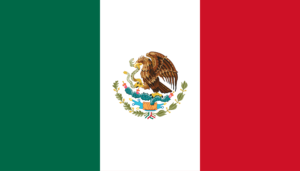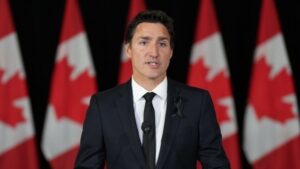
According to Swedbank’s forecast, Lithuania’s economy will grow by 3% in 2025 and by 2.5% in 2026. In 2024, the country’s GDP has already increased by 2.4%, driven by manufacturing growth and retail development.
Factors supporting economic growth include accelerating industrial production, active retail development, and public investment.
However, Lithuania faces serious challenges. In particular, a significant increase in defense spending is needed, which could reach 4-5% of GDP. In addition, the country will have to carry out tax reform, which may affect business and consumer incomes.
Another challenge is the rapid growth of wages, especially in the public sector. This puts pressure on the competitiveness of Lithuanian companies, which are forced to adapt to changing conditions. Inflation is projected at 3% in 2025, and in 2026 it will decline to 2.7%.

Passenger traffic across the Ukrainian border in the week of January 25-31 dropped by another 4% compared to the previous week, to 435 thousand, while net inflows to Ukraine have been recorded for the third consecutive week as the holidays come to an end.
According to the State Border Guard Service’s Facebook page, the number of crossings for exit decreased from 220,000 to 213,000, while the number of crossings for entry decreased from 233,000 to 222,000.
The number of vehicles crossing the checkpoints decreased from 119,000 to 115,000 over the week, while the flow of vehicles with humanitarian cargo decreased from 586 to 493.
According to the State Border Guard Service, as of 12:00 this Sunday, there were small queues of 5 cars only at the Luzhanka and Vylok checkpoints on the border with Hungary.
The total number of people crossing the border this week in 2025 is higher than last year’s: 205 thousand people left Ukraine and 202 thousand entered during the same seven days, with a traffic flow of 112 thousand cars. Last year, this week, passenger traffic stabilized and remained at this level almost until the spring school holidays.
As reported, on May 10, 2022, the outflow of refugees from Ukraine, which began with the outbreak of war, was replaced by an influx that lasted until September 23, 2022 and amounted to 409 thousand people. However, since the end of September, possibly under the influence of news about mobilization in Russia and “pseudo-referendums” in the occupied territories, and then massive shelling of energy infrastructure, the number of people leaving has been exceeding the number of people entering. It temporarily stopped in the second half of December and early January during the holidays, but then resumed again and reached a total of 223 thousand people from the end of September 2022 to the first anniversary of the full-scale war.
During the second year of the full-scale war, the number of border crossings to leave Ukraine, according to the State Border Guard Service, exceeded the number of crossings to enter by 25 thousand, while since the beginning of the third year, the number of crossings has increased by another 188 thousand.
As Deputy Economy Minister Serhiy Sobolev noted in early March 2023, the return of every 100,000 Ukrainians home results in a 0.5% increase in GDP.
In its January inflation report, the National Bank estimated the outflow from Ukraine in 2024 at 0.5 million (0.315 million according to the State Border Guard Service). In absolute terms, the number of migrants staying abroad will increase to 6.8 million in 2024. The NBU also maintained its outflow forecast for 2025 at 0.2 million.
According to updated UNHCR data, the number of Ukrainian refugees in Europe as of January 16, 2025, was estimated at 6.303 million, and 6.863 million worldwide, which is 49 thousand more than as of December 16.
In Ukraine itself, according to the latest UN data, 3.6 million internally displaced persons (IDPs), including approximately 160,000 people, were displaced from the frontline areas in the east and south between May and October 2024 due to the intensification of hostilities.

The Council of Europe Development Bank will provide Ukraine with an additional EUR100 million loan for the HOME project, which will help the government solve the housing problems of the most vulnerable groups who have lost their homes due to the war, and another EUR50 million loan to finance soft housing loans through the State Fund for Youth Housing (Derzhmolodzhytlo).
According to the bank’s website, this decision was made by its Administrative Board on May 31.
It is noted that the initial loan of the HOME project, which was approved in 2024 and also amounted to EUR 100 million, allowed the restoration of the housing rights of 3 thousand families whose homes were destroyed.
As for the loan to the State Agency for Youth and Housing, this initiative aims to overcome critical socio-economic vulnerability by prioritizing internally displaced persons (IDPs) who do not have alternative housing solutions, the CEB said. According to him, the loan will allow approximately 1.1 thousand families to purchase housing.
In a telegram on Saturday, Oleksiy Kuleba, Deputy Prime Minister for Reconstruction of Ukraine and Minister of Community and Territorial Development, added that the project “HOME: Compensation for Destroyed Housing” is part of the ‘eRecovery’ program. According to him, more than 250 thousand real estate objects are currently registered in the State Register of Damaged and Destroyed Property.
“Thanks to additional funding from HOME, more than 3,000 families who have already received housing certificates for destroyed housing will be able to get new homes. This component of eRestoration allows certificate holders to purchase new homes to replace those destroyed by Russian aggression. Participants in hostilities, defenders, people with disabilities and large families have a priority right to compensation under the program,” Kuleba emphasized.
According to him, thanks to the project of preferential lending for IDPs, 1.46 thousand Ukrainian families will be provided with their own housing on the most affordable terms by 2025.

According to Swedbank, the Latvian economy will show growth of 2.2% in 2025, and in 2026 the pace will accelerate to 2.8%. After a 0.2% decline in GDP in 2024, signs of recovery appeared by the end of the year, which creates positive expectations for the next period.
The main drivers of growth will be an increase in exports, growth in household consumption, and increased public investment.
The labor market in Latvia remains stable: the unemployment rate continues to decline, and wages are growing, although the rate of increase is slowing. Inflation in 2025 is projected at 2.6%, which is moderate.
One of the key challenges for the economy remains the implementation of projects funded by the EU’s Recovery and Resilience Facility (RRF). All planned projects are due to be completed by mid-2026, and their successful implementation could be a catalyst for further economic growth.

Mexican President Claudia Sheinbaum has instructed the country’s Economy Ministry to prepare all possible measures in response to the US imposition of import duties on Mexican goods, calling the White House’s accusations against the Mexican government regarding its ties to criminal organizations slanderous.
“I am instructing the Minister of Economy to implement Plan B, which we are working on, which includes tariff and non-tariff measures to protect Mexico’s interests,” Sheinbaum wrote on social media platform X.
She also accused the United States of ineffectively combating the spread of fentanyl and supplying weapons to criminal groups in Mexico.
Sheinbaum suggested that Trump create a working group with the participation of the best experts in the field of public health and security, solving the problems “not through the introduction of tariffs, but through negotiations and dialogue.”
As reported, Trump is set to sign an executive order next week imposing 25% tariffs on goods imported from Mexico and Canada and 10% on goods imported from China. At the same time, duties on energy from Canada will be 10% and will affect the entire Canadian energy sector, including oil, gas, and electricity.

Canada will impose a 25% duty on $155 billion worth of imports from the United States in response to the US tariffs announced by US President Donald Trump, Prime Minister Justin Trudeau said.
“In response to the US trade actions, Canada will impose a 25% duty on $155 billion worth of goods,” the prime minister said in a video message.
He explained that starting Tuesday of next week, the duties will affect $30 billion worth of goods, then $125 billion worth of goods within three weeks so that Canadian companies have time to find alternative partners.
The government and the leadership of the provinces and territories are also considering the possibility of imposing non-tariff restrictions on the United States regarding critical minerals, energy and other goods, Trudeau said.